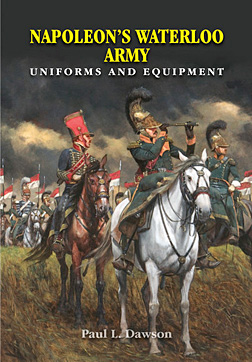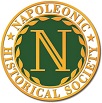Napoleon’s Waterloo Army, Uniforms and Equipment
 Napoleon’s Waterloo Army, Uniforms and Equipment, by Paul L. Dawson, Frontline Books, an imprint of Pen & Sword Books, Barnsley, Great Britain, hardcover, 696 pages, 2019.
Napoleon’s Waterloo Army, Uniforms and Equipment, by Paul L. Dawson, Frontline Books, an imprint of Pen & Sword Books, Barnsley, Great Britain, hardcover, 696 pages, 2019.
In Napoleon’s Waterloo Army, eminent Napoleonic historian Paul L.Dawson contradicts the old comment that the Armée du Nord that fought in Waterloo was one of the most formidable the emperor had ever commanded. The author begins by explaining that the bulk of the army’s men were conscripts of 1814 with precious few veteran subofficers and officers. Many units were newly formed and lacked any sense of esprit des corps. The cavalry had less mounted troops than the emperor had commanded in his 1814 campaign. Napoleon invaded Belgium with the hope of that the Belgian soldiers who had served in his Grand Armée would desert to him as so many French had. Instead, as it advanced, the Armée du Nord suffered from a high level of officer desertion. Aside from its state of morale and order of battle, Dawson focuses especially on the clothing and equipment of Napoleon’s last army. A high percentage of its soldiers entered the campaign lacking water bottles and cooking pots. The supply situation was also bad in regard to clothing and uniforms. Hundreds of photos of original artefacts and dozens of paintings by renowned military artist Keith Rocco help bring to life the pageantry of the era’s military uniforms in which the soldiers fought and died. If the logistics were as dire for the 128,000 soldiers in the Armée du Nord as Dawson states, it begs the question as to how the French achieved their early successes at Quatre Bras, Ligny and in the opening stages of Waterloo. The answer came from one soldier who participated in the campaign, speaking for so many of his comrades, “The Emperor succeeded once more in passing his warlike spirit among our lines…” This large, provocative and profusely illustrated book sheds new light on the campaign of 1815 and surely will satisfy all with an interest in the Napoleonic Era.
Reviewed by Thomas Zacharis, Thessaloniki, Greece.
